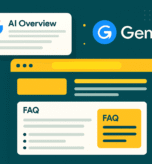Gone are the days when search engines ranked websites just by matching exact keywords. Today, Google and other search engines try to understand what people really mean when they search. This is where semantic SEO comes in.
Semantic SEO is the process of creating content that answers a topic completely, using related terms, real meaning, and search intent not just repeating the main keyword. It helps search engines understand your content better, so your website can appear for more relevant searches and get better visibility.
What Is Semantic SEO?
Semantic SEO is a modern way of writing and organizing your content based on real meaning, not just exact keywords. Instead of focusing only on single phrases, it looks at the full topic and what the user actually wants to know, also known as the user’s need. In the past, SEO was mostly about using the right keyword again and again. For example, if someone searched “best running shoes,” websites would try to repeat that exact phrase many times. But now, search engines are smarter. They understand context and related ideas.
That’s where semantic SEO comes in. It helps you optimize content by topic, not just words. This means covering everything a reader might want to know about a subject using related terms, answering questions, and organizing content in a way that matches how people think. By focusing on topic optimization and real intent, your content becomes more helpful and trustworthy to both users and search engines. This leads to higher rankings and better visibility online.
How Search Engines Understand Semantic Search?
To understand semantic SEO, it’s important to know how search engines process meaning not just keywords. Today, Google doesn’t only match exact words. It tries to understand what people really mean when they search. This is called semantic search. Search engines use Natural Language Processing (NLP) to read and understand content the way humans do. NLP helps Google break down sentences, find key topics, and understand the user intent behind a query. Another important tool Google uses is the Knowledge Graph. This is like a massive map of real-world entities, people, places, things, and how they are connected. For example, if someone searches for “Steve Jobs,” Google knows it’s a person, co-founder of Apple, not just a name.
By recognizing these entities and their relationships, search engines can show results that better match the meaning behind a search, not just the exact words used. That’s why creating content around full topics, not just isolated keywords, is key to modern SEO.
Why Semantic SEO Matters for Visibility?
Semantic SEO plays a key role in improving your website’s visibility on search engines. Unlike traditional SEO, which focuses on a few exact keywords, semantic SEO helps your content rank for multiple related terms by focusing on the full meaning behind the topic.
When you use contextual relevance, creating content that fully answers a user’s intent. Google is more likely to show your page to people looking for helpful, in-depth answers. This is especially important now, as Google and other AI tools rely on entities and topic clusters to understand content better.
With semantic SEO, your page has a better chance to:
- Match search intent more accurately
- Rank for more keywords, even long-tail ones
- Show rich results, like featured snippets or voice search answers
By optimizing for meaning, not just words, you help both users and search engines. This boosts your chances of being visible in traditional search as well as in AI-driven platforms and voice assistants.
How to Use Semantic SEO to Improve Visibility?
Semantic SEO is not just about keywords it’s about creating content that truly understands and answers what users are searching for. Here’s a simple, step-by-step guide to help you improve your search visibility with semantic SEO:
1. Do Semantic Keyword Research
Start by finding semantically related keywords. These are words and phrases that are connected to your main topic.
- Use tools like the Semrush Keyword Magic Tool to explore keyword variations and search intent.
- Group similar keywords into clusters, so your content can target a whole topic, not just one keyword.
2. Plan Topic-Rich Content
- Use pillar pages to explain the main idea.
- Add topic clusters that dive into related subtopics.
- Make sure your content structure is clear and helpful.
This helps search engines understand your website better and it keeps your audience engaged longer.
3. Optimize with NLP and Entities
Natural Language Processing (NLP) is how search engines understand human language.
- Include related terms, entities, and clear context in your content.
- Mention known names, places, or tools when they are relevant.
4. Build Strong Internal and External Links
Links help create semantic relationships between your pages and topics.
- Use internal linking to connect related pages within your website.
- Add external links to trusted sources.
- You can also use structured data (schema) to give search engines more clarity about your content.
Best Practices for Using Semantic SEO Effectively
1. Focus on High-Quality, In-Depth Content
Don’t just write to add keywords. Write to answer real questions and provide full, helpful information. Google rewards comprehensive content that adds value.
2. Match Search Intent, Not Just Keywords
Think about what the user really wants to know. Is it information, a product, or a quick answer? This is called search intent, and it’s a big part of Semantic SEO.
Example: If someone searches “best running shoes,” they probably want recommendations, not just the definition of running shoes.
3. Keep Your Content Fresh
Old content can lose rankings over time. To stay relevant:
- Update stats and facts.
- Add new related keywords or examples.
- Expand sections with the latest trends or questions.
4. Measure and Improve
Use SEO tools like Google Search Console or Semrush to track your content’s performance. Keep an eye on:
- Impressions
- Click-through rates (CTR)
- Average position in search results
Conclusion: Why Semantic SEO Matters for Visibility
Semantic SEO is no longer optional if you want to improve your search visibility. It helps search engines understand your content better by focusing on topics, context, and user intent not just keywords. When you create content that answers real questions, uses related terms naturally, and adds value, you increase your chances of ranking across multiple related searches. This means more visibility and better engagement over time.
To get started, think about what your audience truly wants to know. Then build well-structured, meaningful content around that topic using simple language and smart SEO practices.




